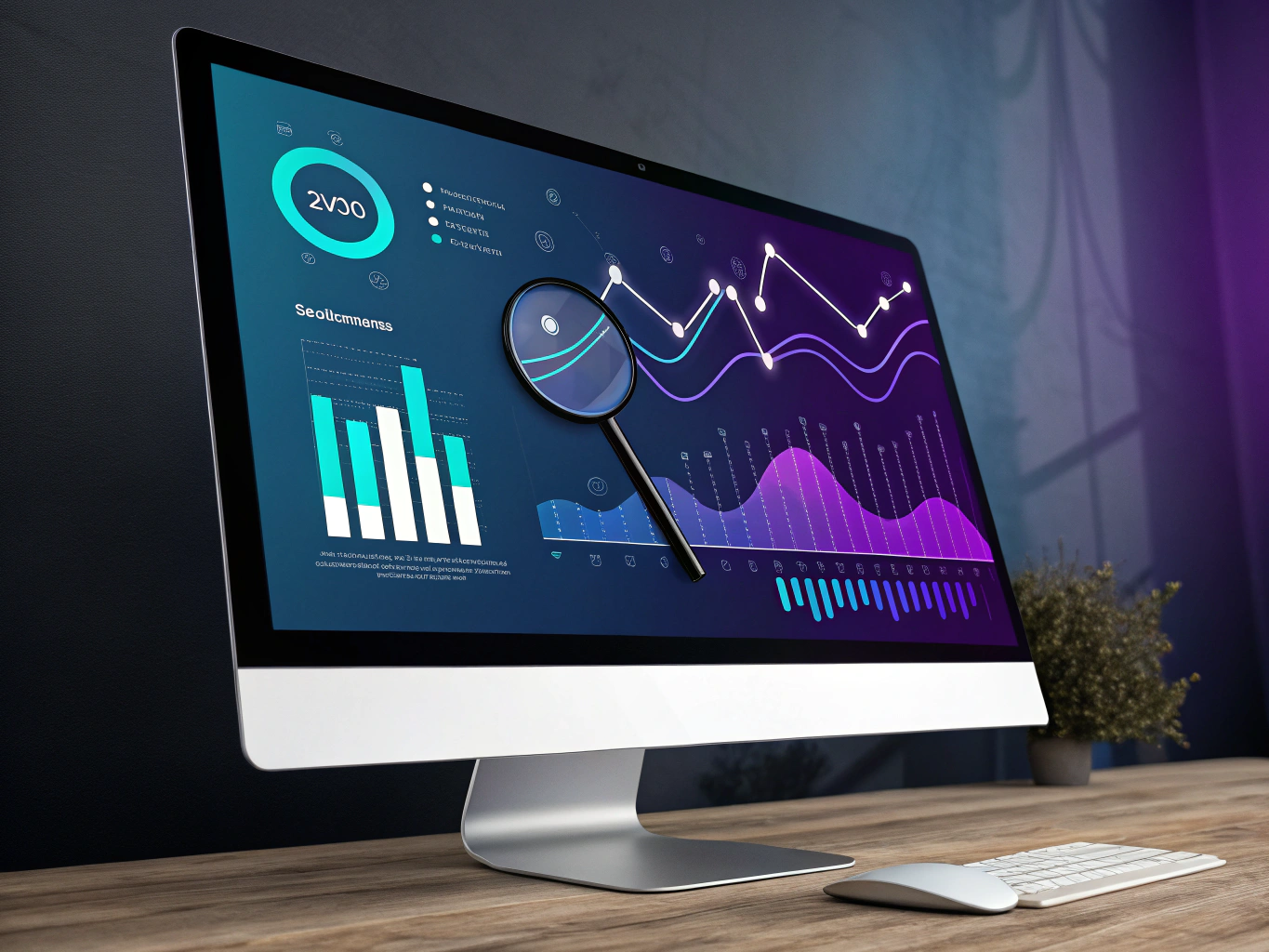The Evolution of SEO Content Analysis: More Than Just Keywords
Remember when SEO was all about stuffing keywords into your content until it read like a robot having a stroke? Those were simpler times. Today’s SEO review tools for content analysis are like having an entire digital marketing team at your fingertips—except they don’t raid the office fridge or schedule endless Zoom meetings.

But here’s the thing: while we’ve got more sophisticated tools than ever for analyzing and optimizing content, most brands are still stuck in 2015, treating SEO like it’s just a technical checkbox rather than the living, breathing ecosystem it’s become. I’ve seen countless ecommerce brands pour thousands into fancy tools without understanding the fundamental shift in how search engines evaluate content.
Understanding Modern SEO Content Analysis

Think of modern SEO content analysis like a health check-up for your website. Just as a doctor doesn’t just check your heart rate but looks at multiple vital signs, today’s SEO tools examine various content metrics that contribute to your site’s overall health. It’s not just about whether you’ve used your target keyword enough times—it’s about whether your content actually helps people.
The Core Components of Content Analysis
When we talk about seo review tools content analysis (and yes, I’m naturally working in our primary keyword here), we’re really looking at three main pillars:
- Technical optimization (the backbone)
- User experience signals (the nervous system)
- Content quality indicators (the heart)
Real-Time SEO Reporting: The Game Changer
One of the most significant advances in content analysis has been the emergence of real-time SEO reporting. It’s like having a content fitness tracker—you can see exactly how your content performs as it happens, not weeks later when it’s too late to make impactful changes.
The Truth About Website Content Analysis
Here’s something most SEO consultants won’t tell you: getting a good SEO score isn’t about gaming the system—it’s about creating content that actually deserves to rank. I’ve seen brands obsess over their SEO content score while completely missing the forest for the trees.
Think about it: when was the last time you checked your website ranking and actually understood what those numbers meant for your business? It’s not just about being #1—it’s about being #1 for the right reasons.
The Tools That Actually Matter
In my years running ProductScope AI and helping brands optimize their content, I’ve found that the most effective approach combines both free SEO consultant tools and premium solutions. Here’s what actually moves the needle:
- Google Search Console (because duh, it’s Google)
- Semrush’s Content Marketing Toolkit (for the data nerds)
- Screaming Frog (for technical audits)
- Surfer SEO (for content optimization)
The AI Factor in Content Analysis
Let’s address the elephant in the room: AI is revolutionizing how we approach SEO tekster (that’s Dutch for SEO texts, by the way). Tools like SEO Tools SeoView.io and others are increasingly incorporating AI to provide more nuanced content analysis. But here’s the catch—AI is an enhancer, not a replacement for human insight.
I often tell my clients that AI in SEO is like having a really smart intern: it can do a lot of the heavy lifting and provide valuable insights, but you still need human judgment to make strategic decisions. The magic happens when you combine AI-powered analysis with human creativity and business acumen.
The Real Impact of Content Analysis Tools
Let’s get real for a moment. The tools themselves don’t guarantee success—they’re just instruments. It’s like giving someone a Stradivarius violin; having an expensive instrument doesn’t automatically make you a virtuoso. What matters is how you use these tools to create content that resonates with both search engines and actual humans.
Through my work with countless ecommerce brands, I’ve seen that the most successful content strategies don’t come from blindly following tool recommendations. They come from understanding your audience, creating valuable content, and then using SEO tools to refine and optimize that content for maximum impact.
Understanding Content Analysis Tools for Modern SEO

Let’s be real – most SEO tools feel like they were designed by engineers who’ve never actually had to optimize content for a living. They throw fancy metrics and complicated dashboards at you without actually solving the core problem: making content that ranks AND converts.
I’ve spent countless hours testing every SEO content analysis tool out there (seriously, my credit card statements are a graveyard of free trials), and here’s what I’ve learned: the best tools aren’t necessarily the most expensive or feature-packed ones. They’re the ones that actually help you understand what Google wants and how to deliver it.
The Tool Stack That Actually Works
Think of SEO review tools for content analysis like assembling your own personal Avengers team. Each tool has its superpower, but together they’re unstoppable. Here’s the stack I’ve found most effective for ecommerce brands and content creators:
The Foundation: Google’s Free Arsenal
Google Search Console and Analytics are your non-negotiables. They’re like having a direct line to Google’s brain. Search Console tells you exactly what queries you’re ranking for (or failing to rank for), while Analytics shows you how users actually interact with your content. The best part? They’re completely free.
The Content Optimizer: Semrush Content Marketing Toolkit
I know, I know – everyone recommends Semrush. But there’s a reason for that. Their content analysis capabilities are like having an SEO expert looking over your shoulder, pointing out opportunities and mistakes. The content gap analysis alone has helped countless brands I work with identify goldmine topics their competitors missed.
Technical Analysis That Actually Makes Sense
Remember when checking your website ranking meant manually searching Google and counting positions? (If you’re still doing this, we need to talk.) Modern SEO review tools have evolved way beyond that – but with evolution comes complexity.
Screaming Frog SEO Spider might look intimidating at first (trust me, I’ve seen content creators’ eyes glaze over during demos), but it’s invaluable for technical content analysis. It’s like sending a tiny robot to crawl your site and report back everything that could be holding you back in search results.
Making Content Analysis Work for Real Businesses
Here’s where most guides drop the ball – they tell you what tools to use but not how to actually implement them in a way that makes sense for your business. Let’s fix that.
The Process That Actually Works
- Start with a content audit using Screaming Frog (free for up to 500 URLs)
- Cross-reference performance data from Google Analytics
- Use Semrush or Ahrefs to identify content gaps and opportunities
- Implement changes using real-time SEO reporting tools
The key is establishing a content scoring system that makes sense for your business. Sure, tools like Yoast will give you a “good SEO score,” but what does that actually mean for your bottom line?
When AI Meets SEO Content Analysis
AI is transforming how we approach content analysis, but let’s not get carried away. These tools are like having a really smart intern – they can handle the heavy lifting of data analysis and provide valuable insights, but you still need human judgment to make strategic decisions.
Tools like Surfer SEO and MarketMuse use AI to analyze top-ranking content and provide optimization recommendations. But here’s the thing – they’re analyzing correlation, not causation. Your content still needs to serve your audience first and algorithms second.
The Reality Check Every Brand Needs
Look, I’ve seen brands spend thousands on SEO tools only to see minimal improvement in their rankings. Why? Because they’re focusing on the tools instead of the strategy. The best SEO tekster (content writer) in the world won’t help if you’re targeting the wrong keywords or misunderstanding user intent.
Free SEO consultant advice: Start with the basics. Use Google Search Console to understand what queries you’re already ranking for. Use Google Analytics to see which content actually engages your audience. Then, and only then, start investing in premium tools to scale your success.
Making Data-Driven Decisions Without Losing Your Mind
The beauty of modern SEO review tools is that they can turn mountains of data into actionable insights. But here’s the catch – you need to know which metrics actually matter for your business. A high content score means nothing if your pages aren’t converting.
Focus on metrics that tie directly to your business goals. If you’re an ecommerce brand, that might mean tracking how your product description optimizations impact conversion rates. If you’re a content creator, it might mean monitoring how your content structure affects time on page.
Implementing Advanced Content Analysis Tools
Let’s get real for a second – most SEO tools promise you the moon but deliver something closer to a cheese sandwich. The gap between what content analysis tools claim they can do and what they actually deliver reminds me a lot of where we are with AI right now: incredible potential, but we need to understand their limitations to use them effectively.
I’ve spent countless hours testing these tools with ecommerce brands at ProductScope AI, and here’s what actually works: combining multiple tools in a way that plays to their strengths. Think of it like assembling your own Avengers team – each tool brings something unique to the table.
The Ultimate Content Analysis Stack
Here’s what I’ve found works best for most brands (and no, you don’t need to mortgage your house to afford these):
- Semrush Content Marketing Toolkit for the heavy lifting
- Screaming Frog for technical content audits
- Google Search Console + Analytics for the ground truth
- Surfer SEO for content optimization (if you’re ready to level up)
Making SEO Review Tools Work for Your Content Strategy

The secret sauce isn’t in having all these tools – it’s in knowing how to make them work together. Think of content analysis like a good Netflix series: you need both the big picture view and the episode-by-episode details to make sense of it all.
Start with Google Search Console for your baseline metrics. It’s like getting the vital signs of your content’s health – how’s it performing in real time? What’s your actual SEO score looking like? This is your free SEO consultant right here.
Advanced Analysis Techniques That Actually Work
Here’s where most content creators go wrong – they focus on individual metrics instead of patterns. Your website content analysis should look at three key areas:
- User intent matching (are you actually answering the questions people are asking?)
- Content depth vs. competition (how thoroughly are you covering topics?)
- Technical optimization (is your content structured for both humans and search engines?)
Future-Proofing Your Content Analysis Strategy
The tools landscape is changing faster than Marvel can pump out superhero movies. AI is reshaping how we approach SEO tekster (content writing), and real-time SEO reporting is becoming more sophisticated by the day. Tools like seoview.io and various SEO tools reviews platforms are constantly evolving.
But here’s the thing – while tools change, principles don’t. Focus on creating content that genuinely helps your audience. Use tools to inform your strategy, not dictate it. It’s like having a really smart intern – they can do amazing research and give you great insights, but you still need to make the final decisions.
Practical Next Steps
Want to check your website ranking and improve your content game? Start here:
- Run a comprehensive content audit using Screaming Frog (free for up to 500 URLs)
- Set up regular monitoring in Google Search Console for performance tracking
- Use Semrush or a similar tool to identify content gaps and opportunities
- Implement a regular review cycle to maintain your good SEO score
Conclusion: Making It All Work Together
Look, at the end of the day, content analysis isn’t about chasing perfect scores or obsessing over every metric. It’s about understanding what your audience needs and delivering it in a way that both humans and search engines can appreciate.
The best approach is to think of these tools as your content marketing crew – each bringing their own expertise to the table. Some handle the technical stuff (scoren in google), others help with creative direction (content optimization), and together they help you build something that actually works.
Remember: the goal isn’t to game the system or find some magical SEO shortcut. It’s about creating content that genuinely helps your audience while making sure it’s discoverable by the people who need it. The tools are just there to help you do that more effectively.
And hey, if you’re feeling overwhelmed by all this – that’s totally normal. Start small, focus on the basics, and build up from there. Your content strategy is a marathon, not a sprint, and these tools are just here to help you run it better.
👉👉 Create Photos, Videos & Optimized Content in minutes 👈👈
Related Articles:
- Amazon Review Analysis Tool Comparison & Buyer Guide
- Amazon Search Engine Marketing: What You Need to Know
- A Guide to Amazon Brand Analytics for Listing Optimization 2024
Frequently Asked Questions
How do I review content for SEO?
To review content for SEO, start by evaluating the relevance and quality of your keywords, ensuring they align with search intent. Check the structure of your content, including headers and subheaders, to make sure they are optimized for readability and search engines. Additionally, assess the use of internal and external links, as well as multimedia elements like images and videos, to enhance engagement and improve SEO performance.
Which tool is used for content analysis?
Several tools are commonly used for content analysis, including Google Analytics for understanding user behavior and engagement metrics. Tools like SEMrush and Ahrefs offer detailed insights into content performance, helping you identify which pieces resonate with your audience and how to optimize them further. Additionally, tools like Yoast SEO can assist in optimizing content directly on platforms like WordPress.
Which tool is commonly used for SEO analysis?
SEMrush is a widely used tool for comprehensive SEO analysis, offering features like keyword research, site audits, and competitive analysis. Ahrefs is another popular choice, known for its robust backlink analysis and keyword explorer tools. Both tools provide valuable insights to help improve your website’s search engine rankings.
How to do an SEO analysis?
To conduct an SEO analysis, start by performing a site audit to identify technical issues such as broken links or slow page speeds. Analyze keyword performance and identify opportunities for new keywords to target. Additionally, examine your backlink profile to ensure quality and relevance, and assess your competitors’ strategies to find areas for improvement.
What is SEO content analysis?
SEO content analysis involves evaluating the effectiveness and optimization of your website’s content to improve search engine rankings. This process includes analyzing keyword usage, content structure, and readability, as well as ensuring that content meets the needs and expectations of the target audience. The goal is to create high-quality, engaging content that aligns with search engine algorithms and user intent.
About the Author
Vijay Jacob is the founder and chief contributing writer for ProductScope AI focused on storytelling in AI and tech. You can follow him on X and LinkedIn, and ProductScope AI on X and on LinkedIn.
We’re also building a powerful AI Studio for Brands & Creators to sell smarter and faster with AI. With PS Studio you can generate AI Images, AI Videos, Blog Post Generator and Automate repeat writing with AI Agents that can produce content in your voice and tone all in one place. If you sell on Amazon you can even optimize your Amazon Product Listings or get unique customer insights with PS Optimize.
🎁 Limited time Bonus: I put together an exclusive welcome gift called the “Formula,” which includes all of my free checklists (from SEO to Image Design to content creation at scale), including the top AI agents, and ways to scale your brand & content strategy today. Sign up free to get 200 PS Studio credits on us, and as a bonus, you will receive the “formula” via email as a thank you for your time.
